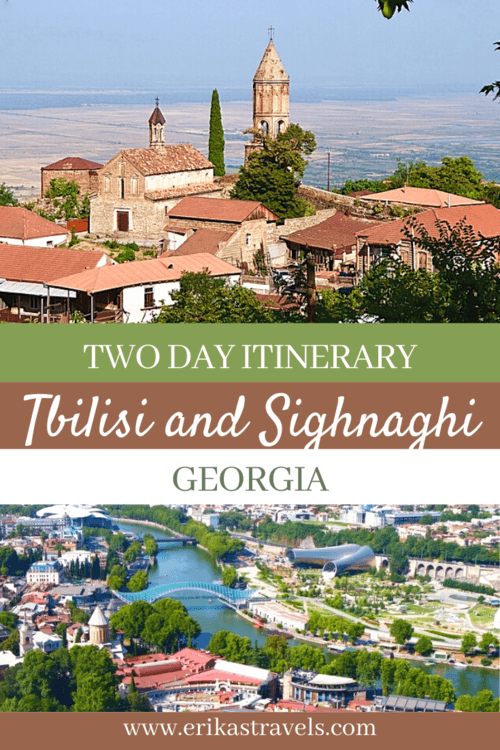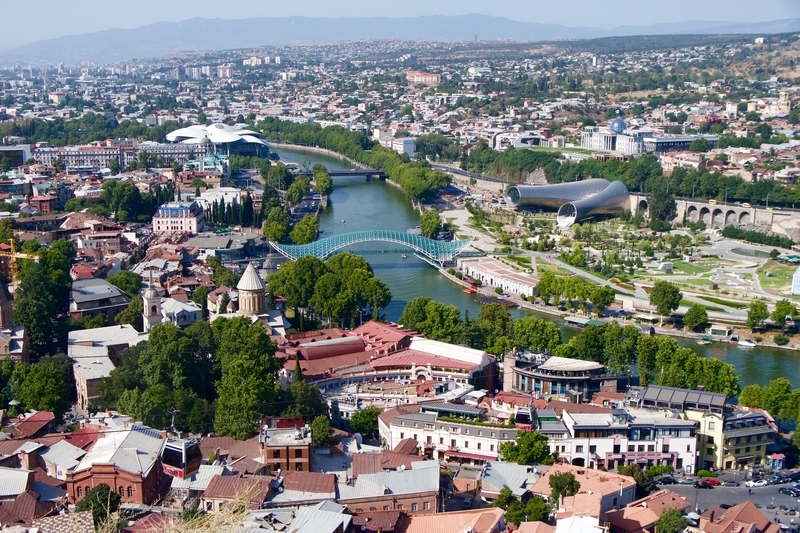
Georgia at a Glance: Two Days in Tbilisi and Sighnaghi
When I announced my intention to visit the small ex-Soviet nation of Georgia, I suppose it is understandable that many concluded I was off to explore the U.S state, rather than the country.
Like nearby Azerbaijan and Armenia, the Republic of Georgia isn’t exactly the first place most Americans think of when planning their holidays. Nor is it the second. Nor the third. Some of the people I spoke with were surprised that I was willingly choosing to visit a country associated with uprisings and Soviet aggression. Others were altogether unaware of Georgia’s existence.
But the Republic of Georgia is a far cry from its stereotype as a repressed nation with little to offer. The small Caucasian country is brimming with natural beauty, urban wonders and culinary delights. Since the Rose Revolution in 2003, Georgia has come a long way in reinventing itself as a wonderland for lovers of nature and culture.
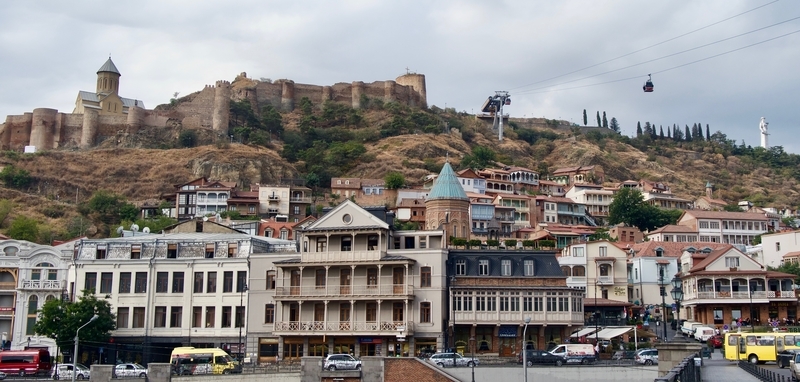
And in Europe, at least, tourists are slowly starting to take notice.
TWO DAY ITINERARY FOR TBILISI AND SIGHNAGHI
Dan and I spent two days in Tbilisi, following an overnight train journey from Baku–Azerbaijan’s flashy, oil-rich capital on the banks of the Caspian Sea. During our trip to Tbilisi, we stayed at the Hippie Hostel for While not downtown, it is a comfortable budget option within walking distance of all major sites in the city.
Though we could have easily spent the entirety of our Tbilisi itinerary on the city itself, our two days in Tbilisi included a visit to the wine-maker’s region of Sighnaghi.
TBILISI: THE UNDERRATED GEM OF THE CAUCASUS
At first glance, Tbilisi seemed a bit rough around the edges. Near the train station, our impression was of an economically depressed city with boarded up shops and concrete apartment buildings. Yet, as we made our way toward our Hostel, both the city itself and our impressions of the area began to transform.
And when we walked along the Kura River from our accommodation to the Old Town, Tbilisi swept us away with its uniqueness and charm.
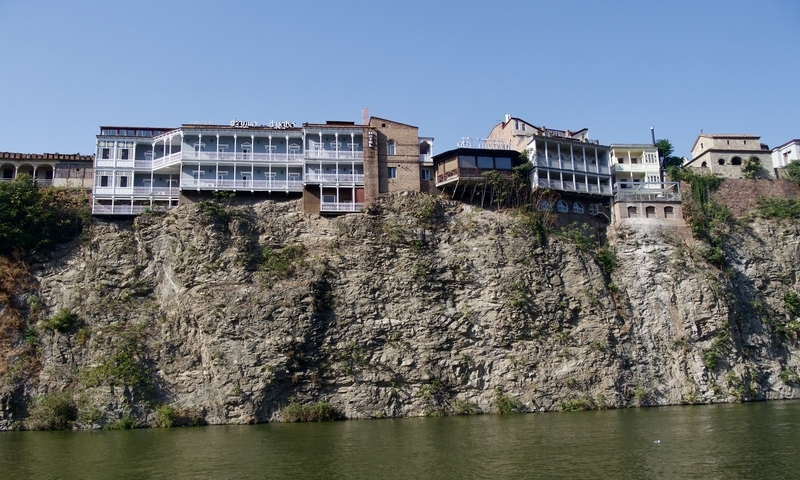
Tbilisi is attractive and ever-lively–with picturesque cafe-lined streets, a dramatic rivarine setting and monasteries speckling a patchwork of colorful houses. In the city’s historic quarters, lace-like balconies adorn crumbling houses and cobbled streets amble up steep hillsides.
I may even go as far as saying that Tbilisi is one of Europe’s prettiest capital cities.
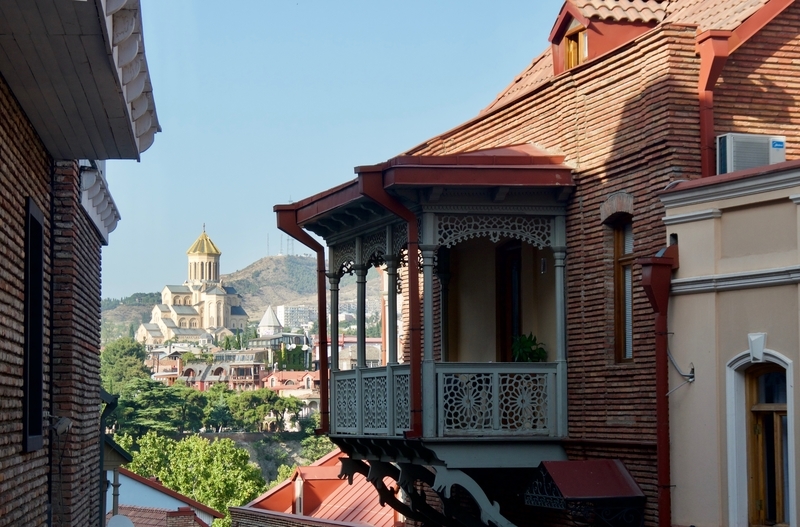
Tbilisi’s recent stability since the Rose Revolution, has propelled the city into a disorienting modern age. Its cityscape is at once harmonious and eclectic, with beautiful natural surroundings and distinctive architecture that reflects its storied past.
Like Baku, Tbilisi sits at the convergence of East and West; at a crossroads of civilizations that left indelible marks on the nation’s identity and psyche. So while largely Eastern Orthodox, the city has a fascinating mix of religious buildings dotting its hillsides. In wandering the streets of Tbilisi, we uncovered mosques and synagogues and more churches than I could count.
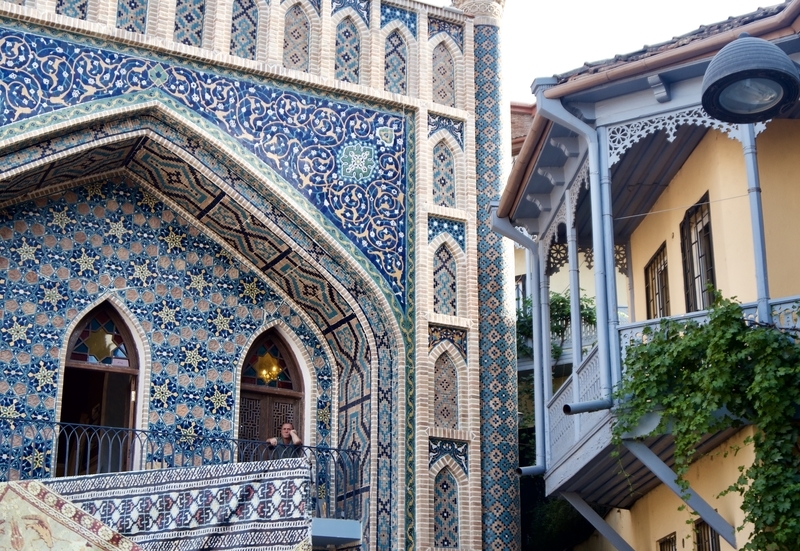
For the best views of Tbilisi’s space-age architecture and ancient cathedrals, we took a funicular to the Narikala Fortress that towers over the city. From the top of the fortress, a birds-eye view of Tbilisi reveals a city with a fragmented identity–one that is clinging to its historic past, while it marches steadfast into the 21st Century.

Though there are many things to do in Tbilisi, Dan and I quickly found that eating our way through the city became our favorite past-time. During our two days in Tbilisi, Dan and I indulged in the tantalizing meat-y cheese-y goodness of Georgian cuisine. Tbilisi’s highly touted food scene is not for the faint-hearted. Dripping in fats and smothered in cheese, Georgia’s artery-clogging, cholesterol-heavy food is some of the tastiest I’ve ever encountered.
Heeding the advice of our Lonely Planet guide, we tried khachapuri at Machakela for lunch, and then headed to Racha for a no-frills dinner of solid Georgian home-cooking. Racha is an unassuming eatery that is regarded as one of the best restaurants in Tbilisi. In the crowded underground restaurant, we delighted in walnut-stuffed eggplants, juicy Kinkali dumplings and Georgian red wine.
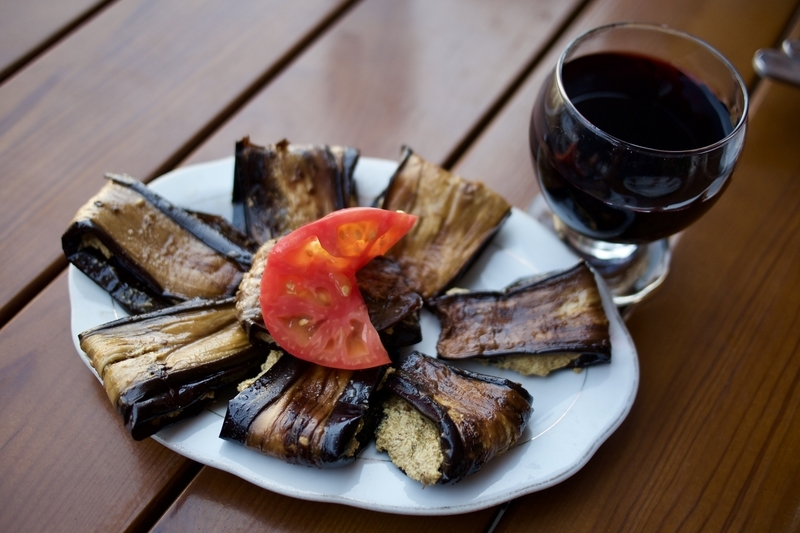
SIGHNAGHI: HEART OF GEORGIA’S WINE COUNTRY
The following day, Dan and I traveled to Sighnaghi in order to learn more about Georgia’s winemaking traditions. Situated roughly two hours from Tbilisi–in the heart of Georgia’s wine country– Sighnaghi is a pretty hilltop town that blends Georgian architectural styles with the charm of a Tuscan village.
The Kakheti Region of Georgia is one of the oldest wine regions in the world. In the fertile valleys East of Tbilisi, winemaking dates back 8,000 years. Today, wine is one of Georgia’s primary exports and viticultural traditions are considered an integral part of the country’s national identity.
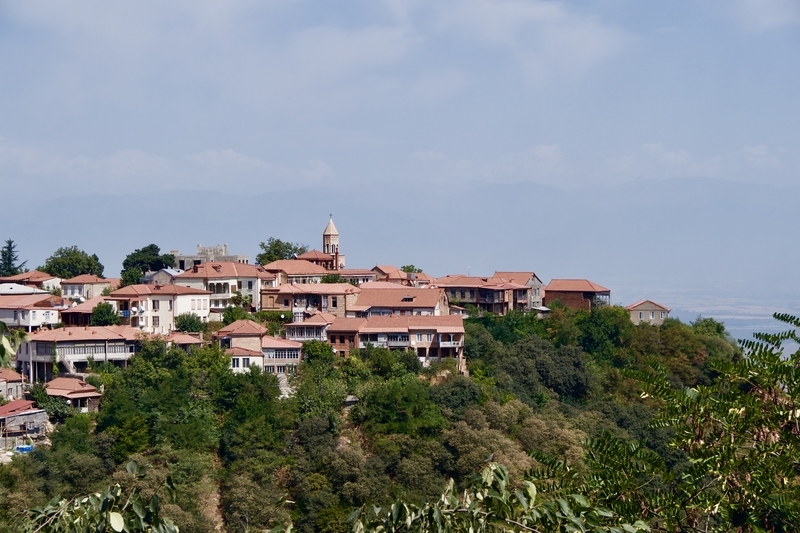
We visited Sighnaghi in hopes of eating at the Pheasant’s Tears Winery–a popular stop along Georgia’s food and wine trail and a feature on Anthony Bourdain’s Parts Unknown. Unfortunately, once we arrived, we found that the establishment was closed for the summer holidays.
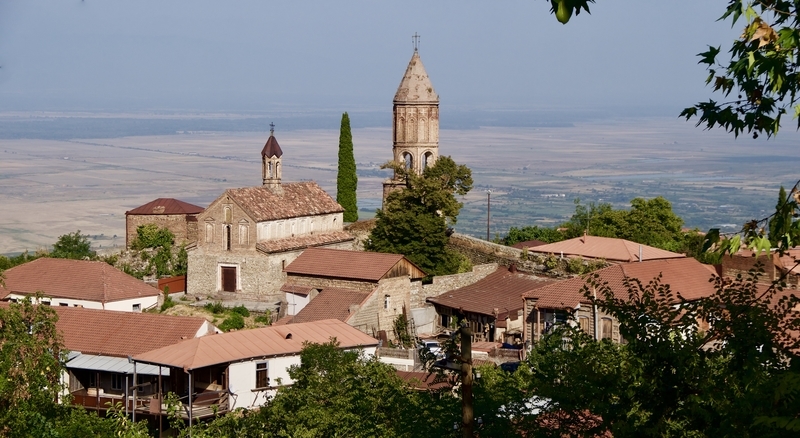
Pheasant’s Tears aside, Sighnaghi is worth visiting. In the company of a Polish couple we had met on the minibus from Tbilisi, we savored wine and lamb kebabs at the Host of Sighnaghi Cafe, walked to the nearby Bodbe Monastery and relished the views of our surroundings.
****
It is difficult to pinpoint exactly what makes the Republic of Georgia so special. I imagine its allure is a combination of natural beauty, of unbridled hospitality, of postcard-perfect villages and of delightful food. And I know I’m not the only person that has been seduced by Georgia’s charm. Europeans are catching on and, as a result, Georgia is consistently getting coverage as one of the world’s best value destinations.
I presume it won’t be long till my fellow Americans realize what they’ve been missing.
________________________________
Like this Post on Traveling to Tbilisi and Sighnaghi? Pin It!
